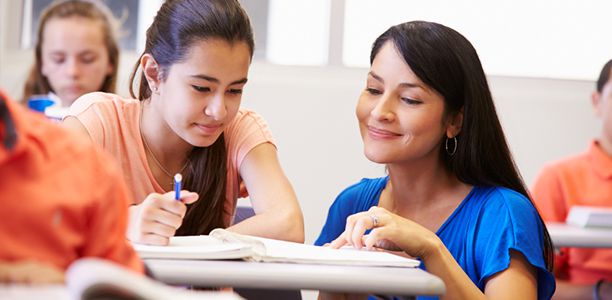A study has looked at a new way of teaching mathematics in primary and secondary school classrooms, and its ability to enhance learning.
The study explored a unique way of delivering a lesson on fractions where teachers provided students with challenging maths tasks to work on by themselves or in a group, rather than being instructed on specific solutions.
The project found students preferred to work out solutions for themselves, and determine their own strategies for solving problems, rather than following instructions they have been given.
The approach could lead to changes to how teachers currently plan their teaching in mathematics, how textbooks are written and how students are assessed.
Nearly 5,000 primary and secondary students in state, independent and faith based schools across Victoria, New South Wales and Tasmania took part in the study.
The focus of the new approach was a lesson on fractions with students asked to develop two different solutions to a fractions question, before being shown what to do by the teacher.
Various strategies were then discussed as a class, before students completed another similar question. Prompts were given to students who experienced difficulty and those who finish the task quickly.
Lead researcher Professor Peter Sullivan, Faculty of Education, said the study suggested that students learn mathematics best if they engage in building connections between mathematical ideas for themselves rather than being told how to by the teacher.
“Essentially the notion is for teachers to pose problems that the students do not yet know how to solve and to support them in coming to find a solution,” Professor Sullivan said.
“In this approach, learning will be more robust if students connect ideas together for themselves, and determine their own strategies for solving problems.”
Professor Sullivan said teachers were encouraged to communicate with students about the benefits of persisting.
“While it is possible for everyone to learn mathematics, it takes concentration and effort over an extended period of time to build the connections between topics, to understand the coherence of mathematical ideas, and to be able to transfer learning to practical contexts,” he said.
“To do this, students need to be encouraged to persist, which includes them concentrating, applying themselves, believing that they can succeed and making an effort to learn.”
When given a task to solve, the expectation is that the students do not ask the teacher for direction but seek to solve the task for themselves.
“Overcoming challenges also provides the strategies and experiences that can be useful in students’ later studies and lives. Challenge also contributes to brain development and growth,” he said.
The research ‘Encouraging Persistence, Maintaining Challenge’ is funded by the Australian Research Council and is investigating the relationship between teacher expectations, student persistence and the learning of mathematics.
(Source: Monash University)










